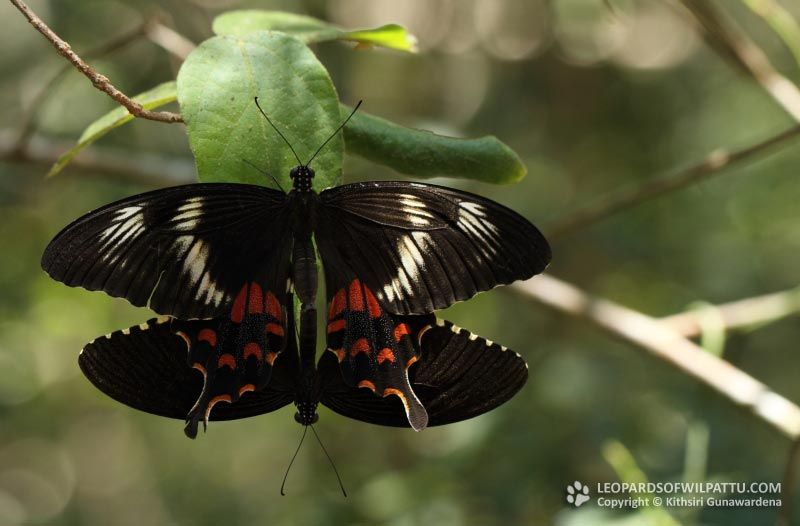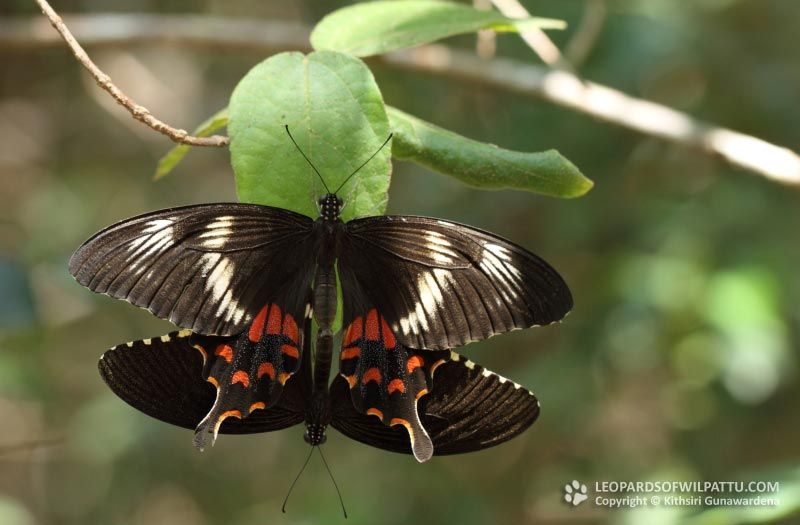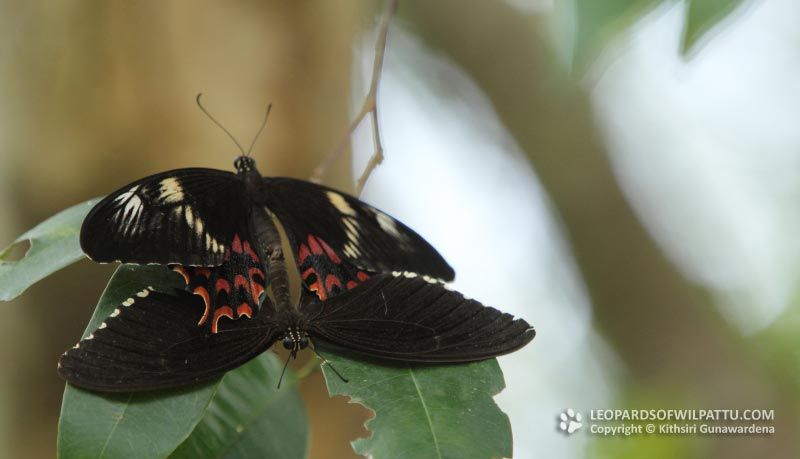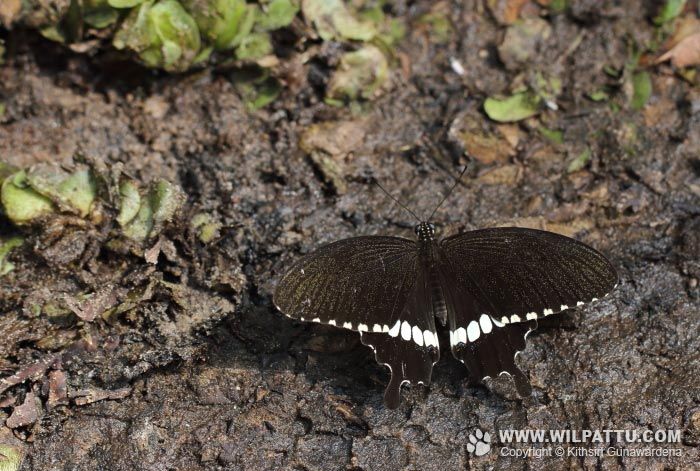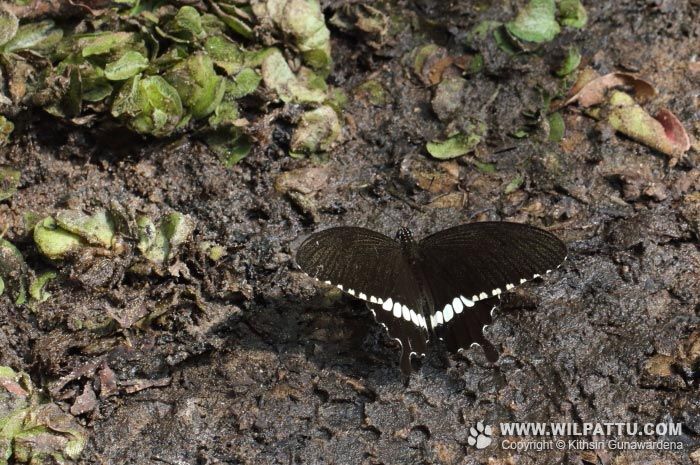
Butterflies ‹‹ Go Back
Other than in Sri Lanka this swallowtail butterfly is widely distributed in Asia and is found in India, Pakistan, Nepal, Myanmar, Thailand, China, Taiwan, Hong Kong, Japan, Vietnam, Laos, Cambodia, Andaman & Nicobar Islands, Malaysia, Brunei, Indonesia, Philippines and Singapore. There are 21 subspecies recognized in the world and the race that is found in Sri Lanka is P.p Romulus. The conservation status of this species is regarded as Least Concerned (National Red List 2012) and it is protected under the Fauna and Flora Protection Ordinance as amended by Act No. 22 of 2009.
I have observed this butterfly to be very common throughout the country up to an elevation of 1400 meters except in the east. I have observed it in the Jaffna peninsular, the Delft Island and in the Mannar island as well. The highest altitude at which I have seen it is in Haputale at an altitude of 1441 meters. The Common Mormon is found in Colombo and will visit most home gardens, which have flowering plants.
The host plants on which the female lays its eggs include citrus species such as Lemon, Lime, Orange as well as Wood Apple and Bol Pana (a species which is very common in Wilpattu).
I have studied the life cycle of this interesting species in my home garden and have watched the growth of caterpillars and also the butterfly emerging from the chrysalis. The tiny caterpillars, as they emerge from the eggs, resemble birs droppings and are thus protected from predation. They feed voraciously and turn in to green coloured caterpillars, well camouflaged on the lemon leaves. As the leaves on which they feed do not carry any substance which is ponioious to birds, lizards ect, they are quite vulnerable to be predated. However, a remarkable adaptation helps this species to overcome this vulnerability. The females that emerge from any brood takes three colour forms. One will be similar to the male but the other two resemble the Crimson Rose and the Common Rose. The caterpillars of these two butterfly species feed on the leaves of Sap Sanda Aristolochiae, a vine that produces latex, which is poisonous to birds and lizards. These predators have learnt to avoid feeding on these butterflies as they carry this poisonous substance in their bodies. Thus the female Common Mormon, which resembles the Crimson Rose and the Common Rose, enjoys a life free of predation and ensures a more successful existence for its kind. However the two species can be distinguished in the filed as the abdomen of the Common Mormon, as depicted in the photos of the mating pair, will always be black where as it is red in Common and the Crimson Rose.
This is one of the commonest butterflies in Wilpattu and can be seen flying throughout the park from mid morning till early evening.

